When it comes to managing your finances responsibly, you need to understand income tax forms. You encounter these forms annually, and its accuracy is pivotal in determining your tax obligations. There are a variety of tax forms, each serving a distinct purpose, from reporting income sources to claiming deductions.
Take note of these documents as it empowers you to accurately portray your financial status to the government. Familiarize yourself with the relevant forms—be it the W-2 for employment income or 1099 for miscellaneous earnings—to ensure compliance and minimize errors. Also, it’s essential you are aware of any recent updates or alterations in tax laws and form requirements for precise filing.
Mastery of income tax forms not only facilitates smoother tax filing but also helps you optimize deductions, ensuring you’re only paying what’s necessary. This comprehensive understanding fosters financial clarity and adherence to legal obligations, offering you peace of mind in your financial endeavors.
Income Tax Forms: Everything You Need to Know:
- W-2 Form (Wages)
- Form 1099 (Miscellaneous Income)
- Form 1040 (Tax Return)
- Schedule EIC (Earned Income Credit)
- Form 4137 (Social Security and Medicare Tax on Unreported Tip Income)
- Schedule A (Itemized Deductions)
- Schedule C (Business Profit/Loss)
- Schedule D (Capital Gains/Losses)
- Schedule SE (Self Employment Tax)
Recap
1. W-2 Form (Wages)
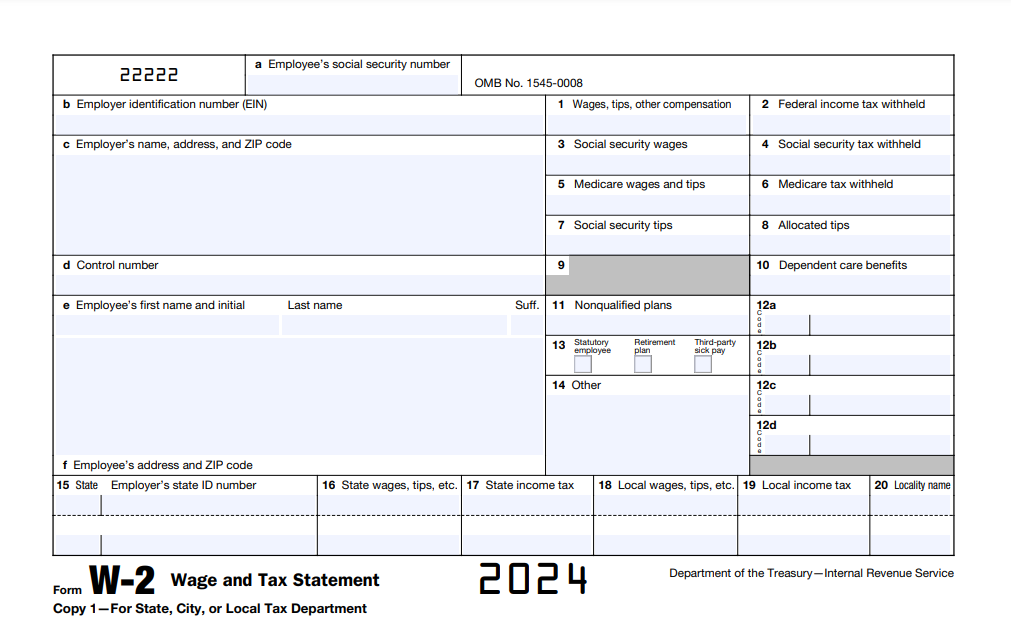
The W-2 Form outlines your annual earnings and tax withholdings from your employer. It’s a crucial document you need to file your tax return accurately. Your employer provides this form to you and the IRS, ensuring transparency regarding your income.
It includes vital details like wages you earned, federal and state income taxes withheld, and contributions to retirement plans. Make sure you thoroughly review it, as errors could affect your tax filing accuracy.
You’ll typically receive this form by January 31st each year, giving you ample time to prepare for tax season. Remember, it’s crucial you keep this form safe and handy for reference when filing your taxes to ensure compliance with the IRS regulations.
2. Form 1099 (Miscellaneous Income)
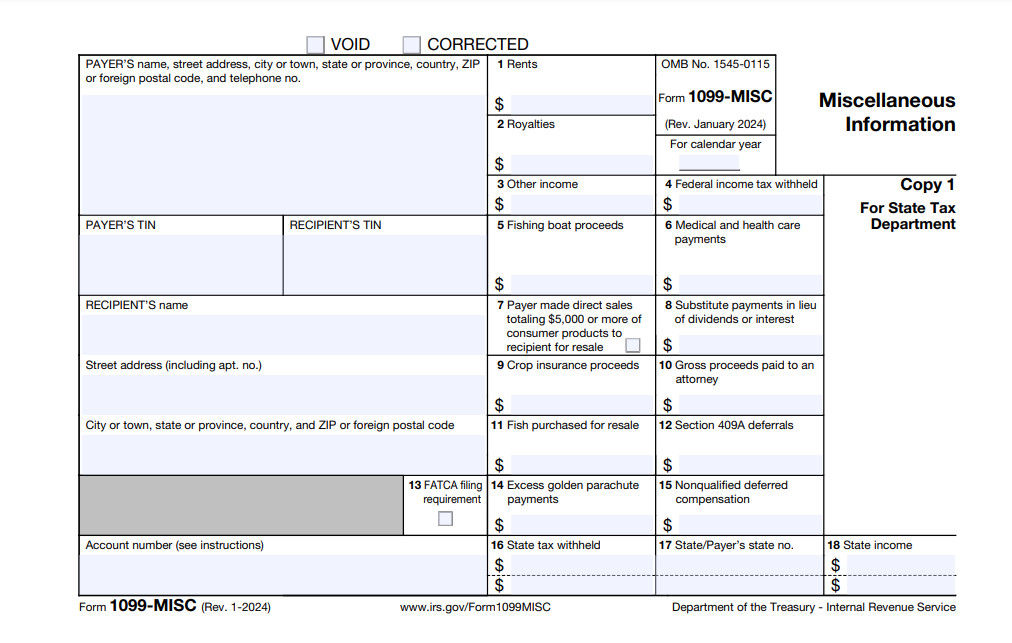
Another crucial form you may need is Form 1099. It captures various types of income beyond traditional wages. You receive this form when you earn at least $600 in income outside of a regular job, such as freelance work, interest, or dividends.
It’s essential you keep track of these incomes throughout the year because each source issues a different 1099 form, detailing the specific earnings. The most common types include 1099-NEC for non-employee compensation and 1099-INT for interest income.
Review each 1099 form you receive carefully, as it directly impacts your tax return. Each form signifies income you must report to the IRS. Even if you don’t receive a 1099 for income below $600, you’re still responsible for reporting it accurately on your tax return.
>>>MORE: Form W-4 and Your Take-Home Pay
3. Form 1040 (Tax Return)
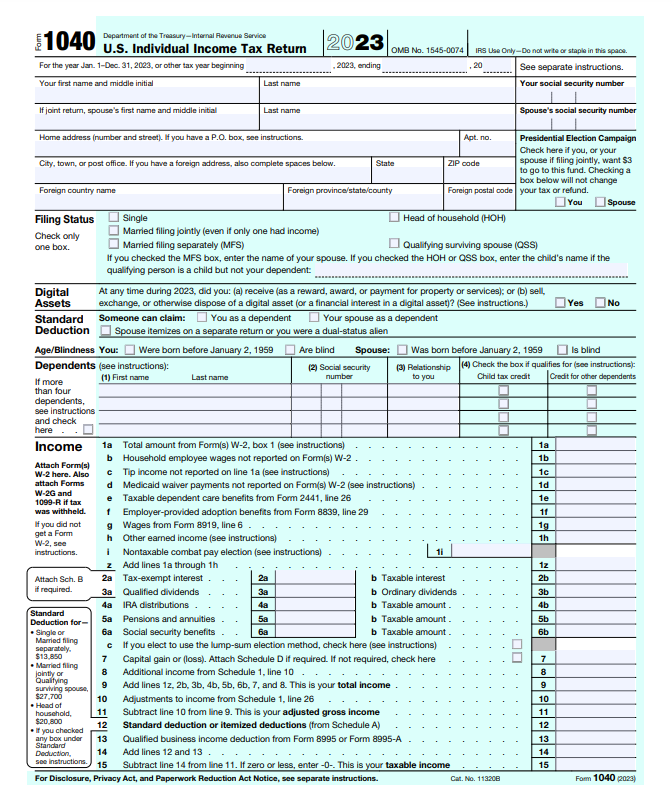
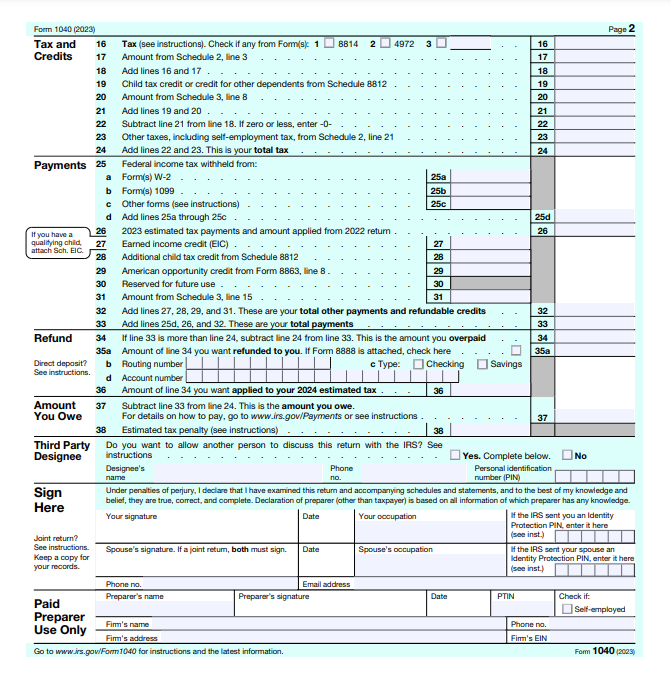
IRS Form 1040 is the cornerstone of your tax obligations. It’s the primary document you use to report your income, claim deductions, and calculate the taxes you owe or the refund you might receive. When you file this form, you provide a comprehensive snapshot of your financial situation to the IRS.
You detail your various sources of income—wages, dividends, interest, and more—alongside adjustments and deductions, ensuring you accurately represent your tax liabilities. This form also allows you to claim tax credits, reducing your tax burden or increasing your refund.
Remember, accuracy is paramount; any mistakes might lead to potential audits or delays in processing. As tax laws change periodically, make sure you are aware of the current form requirements to ensure compliance and precise tax reporting.
4. Schedule EIC (Earned Income Credit)
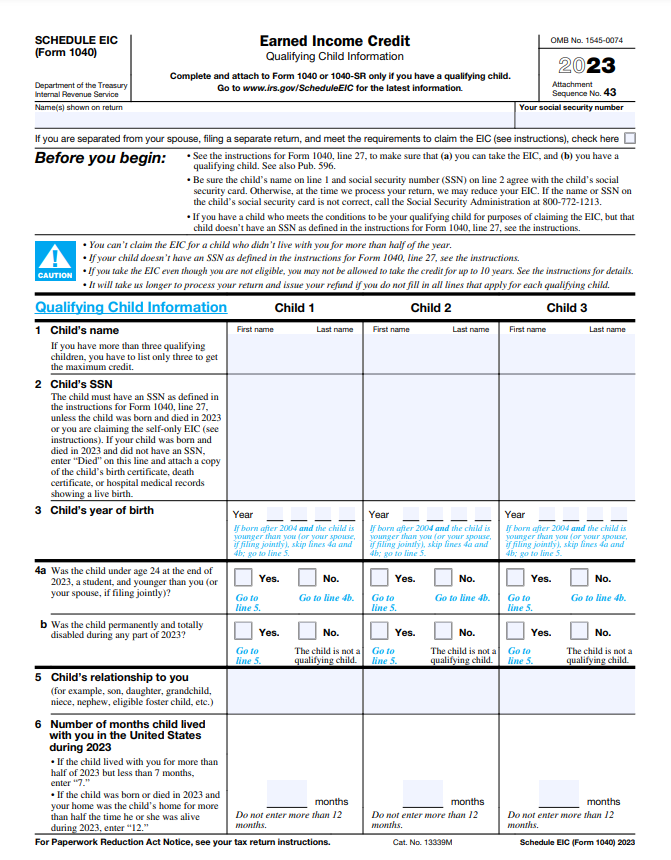
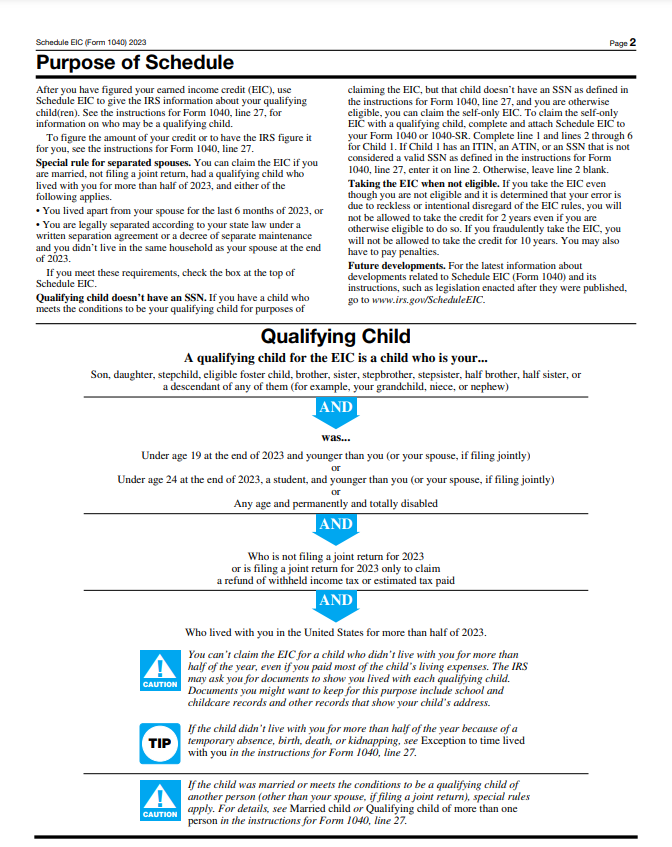
Schedule EIC, specifically for the Earned Income Credit (EIC), is critical for you if you meet certain income requirements. This credit is designed to provide assistance by reducing your tax bill or potentially resulting in a refund, even if you owe no taxes.
It’s calculated based on your earned income and the number of qualifying children you have. By accurately filling out Schedule EIC, you ensure you claim the maximum credit you’re eligible for. Don’t forget that this credit can be substantial and significantly impact your tax situation.
Make sure you keep track of your income, understand the qualifying criteria, and correctly report the information on Schedule EIC so you can receive the full benefit of this credit. Always verify the current IRS guidelines to ensure you’re eligible to claim the EIC.
5. Form 4137 (Social Security and Medicare Tax on Unreported Tip Income)
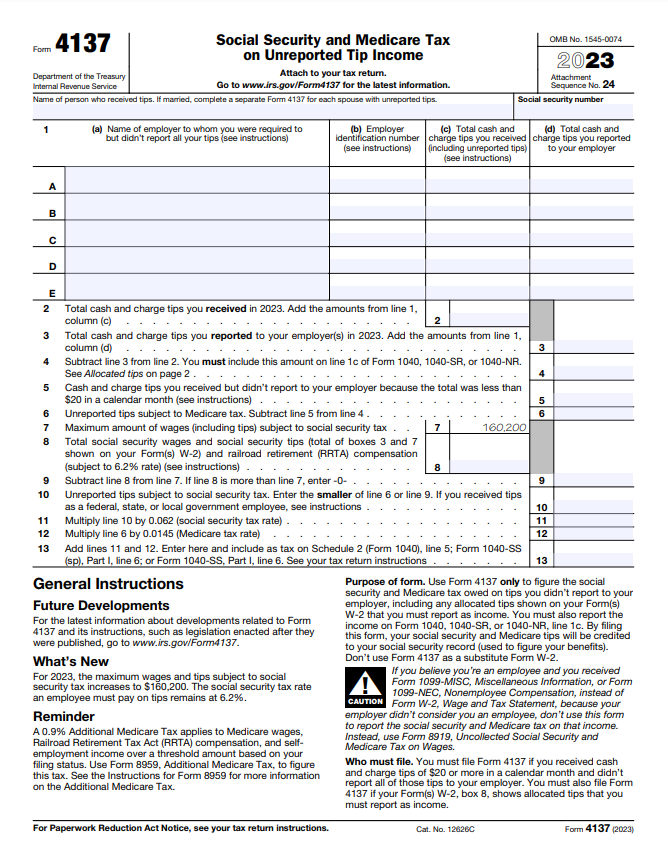
IRS Form 4137 focuses on ensuring you accurately report and pay Social Security and Medicare taxes on unreported tip income. If you receive cash tips that aren’t reported to your employer, it’s your responsibility to disclose and pay the necessary taxes on this income.
Form 4137 covers not just cash tips but also any other type of tip income that wasn’t reported to your employer. Whether it’s tips you received through credit card transactions, tip-sharing arrangements, valuable items, or any other form of gratuity that hasn’t been properly reported.
This form helps you calculate the additional taxes you owe based on the unreported tip amount. Make sure you keep meticulous records of your tip earnings, as the IRS might cross-check your reported income against industry standards to ensure accuracy.
If you fail to report these tips, it can lead to penalties and interest on the unpaid taxes. Ensure you stay vigilant and accurately report all tip income on Form 4137 to fulfill your tax obligations and avoid potential issues with the IRS.
6. Schedule A (Itemized Deductions)
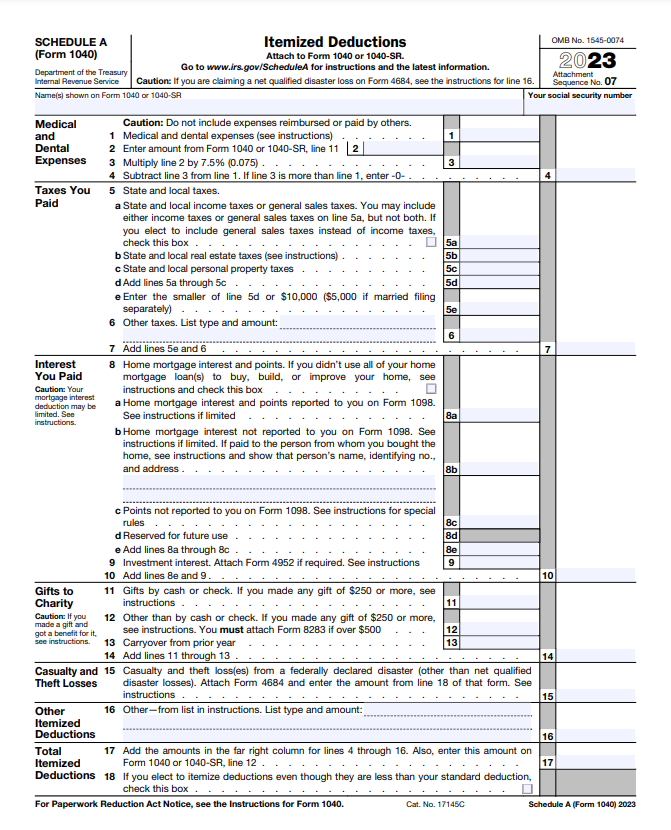
Schedule A, or Itemized Deductions, allows you to maximize deductions based on your eligible expenses, benefiting you during tax time. By using this form, you can list various qualifying expenses, such as medical costs, charitable donations, mortgage interest, and state and local taxes.
It’s beneficial if your total itemized deductions exceed the standard deduction amount. You have the opportunity to reduce your taxable income by claiming these deductions, potentially lowering your overall tax bill or increasing your refund. Ensure accuracy by keeping records and receipts for all deductible expenses you list on Schedule A.
You should also understand which expenses qualify and meticulously document it so you can claim the maximum deductions available to you. Always verify current IRS guidelines to ensure your deductions comply with the latest regulations.
7. Schedule C (Business Profit/Loss)
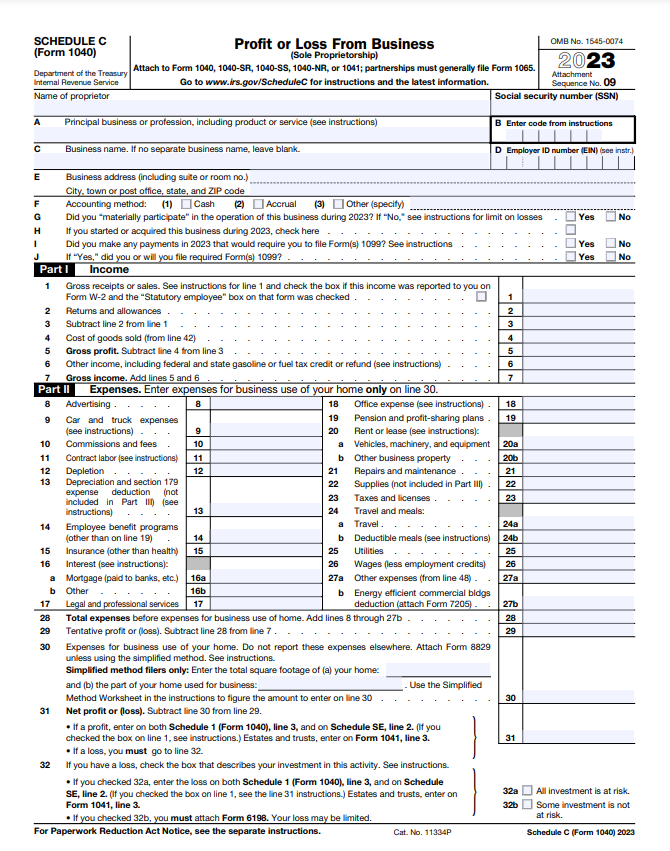
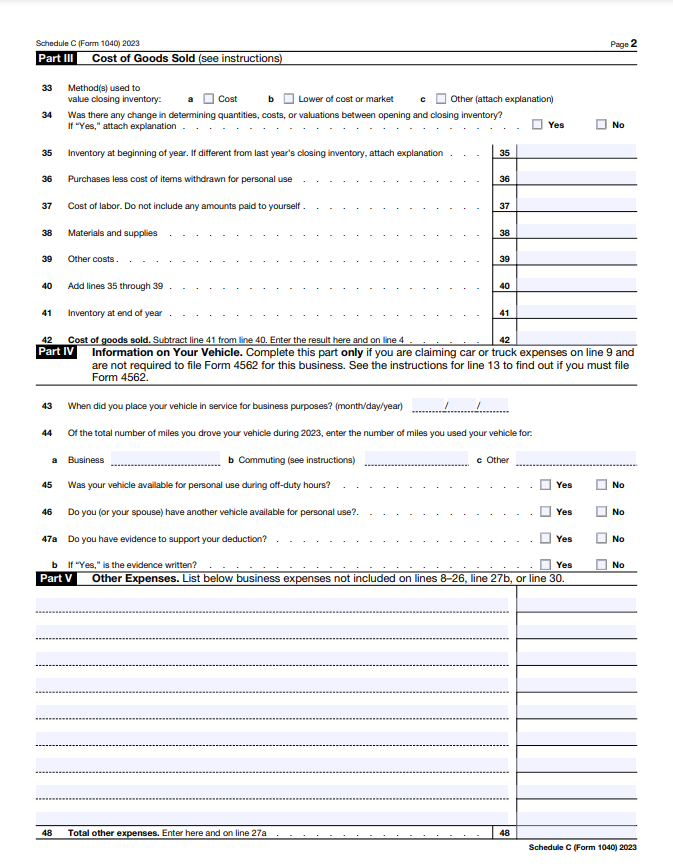
If you’re self-employed or have a small business, use Schedule C to report your business profit and loss to the IRS. This form helps you report your business income and deductible expenses to calculate your net profit or loss.
It’s your opportunity to detail revenues from your business activities—be it freelance work, consulting, or running your own enterprise—along with allowable expenses like supplies, rent, utilities, and more. By carefully documenting both income and expenses, you accurately determine the profitability of your business.
The resulting net profit or loss from Schedule C directly impacts your overall tax liability. Ensure thorough and precise reporting on Schedule C as it helps you reflect the true financial picture of your business, allowing you to comply with tax laws and potentially reduce your taxable income.
8. Schedule D (Capital Gains/Losses)
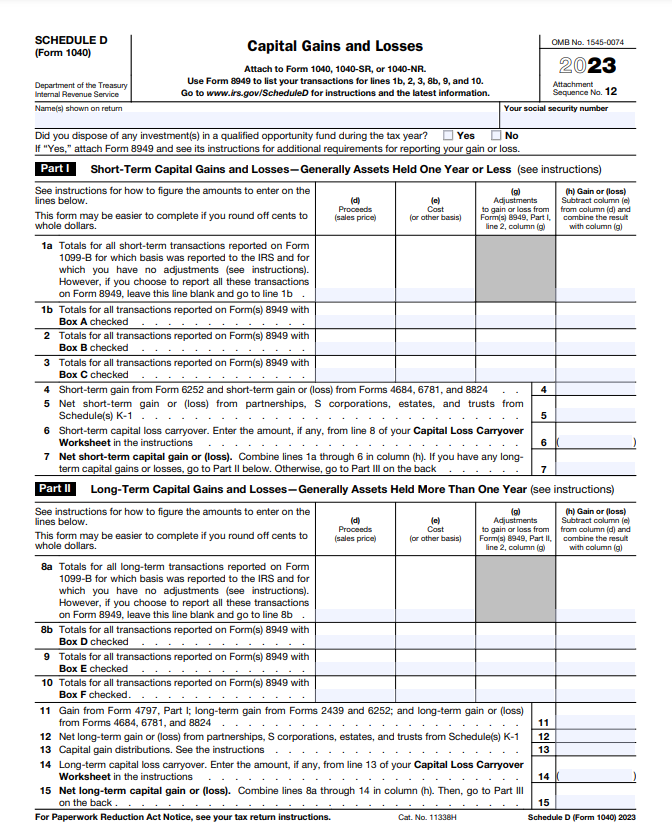
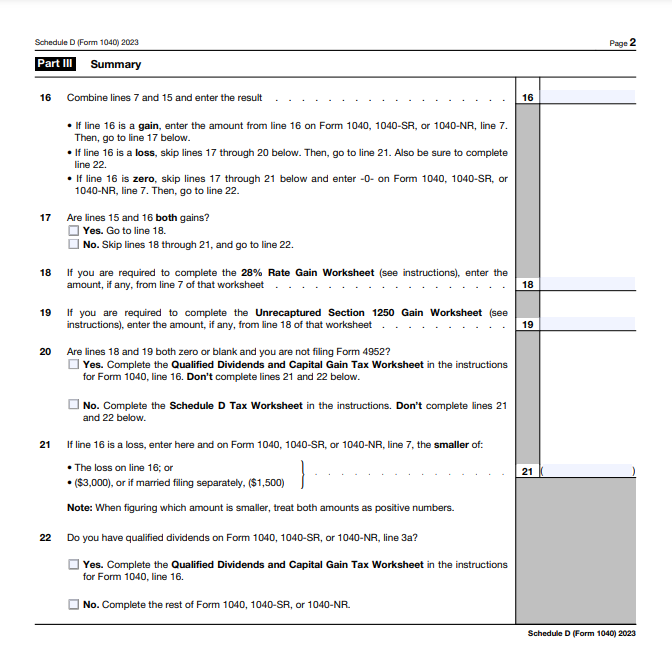
Schedule D is pivotal for you if you’re dealing with capital gains and losses. This form provides a comprehensive overview of your investment activities, allowing you to report gains and losses from the sale of assets like stocks, bonds, or real estate.
By carefully detailing these transactions, you calculate your net capital gain or loss for the tax year. It’s crucial you accurately report these figures, as it directly impacts your tax liability. Make sure you understand how to categorize short-term and long-term gains or losses because it influences the tax rates applied.
Thoroughly document each investment transaction, including purchase and sale details, to ensure precise reporting on Schedule D. Be informed about guidelines regarding capital gains and losses so you can accurately report these transactions and comply with tax laws.
9. Schedule SE (Self Employment Tax)
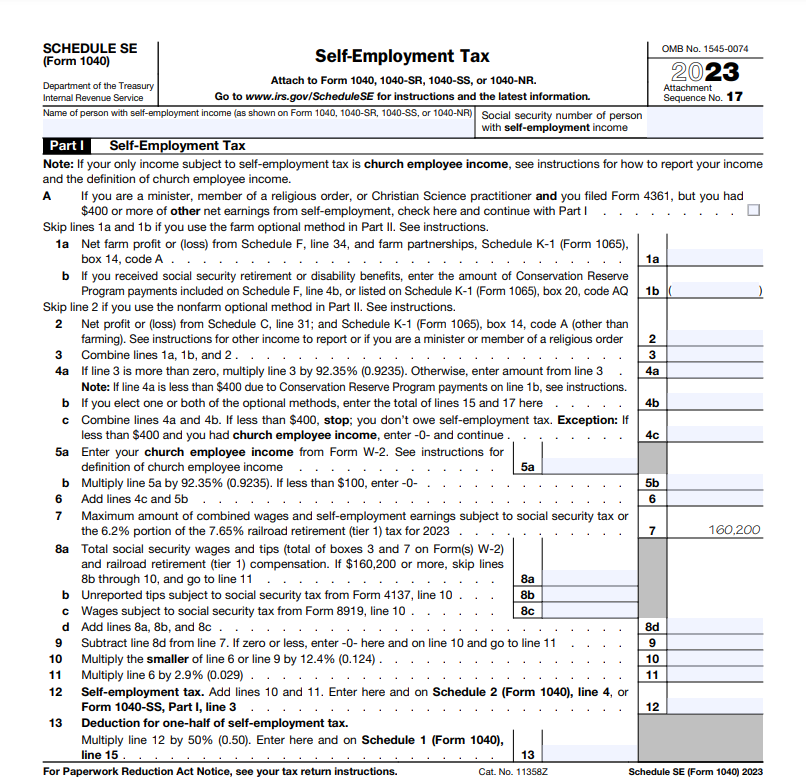
As a self-employed individual, you use Schedule SE to report your self-employment tax. This form calculates the Social Security and Medicare taxes you owe on your self-employment income.
While you work for yourself, you’re responsible for both the employee and employer portions of these taxes. Schedule SE helps you determine these taxes based on your net earnings from self-employment.
It’s crucial you accurately calculate and report these taxes to ensure compliance with IRS regulations. When you calculate these taxes and fill out Schedule SE correctly, you not only fulfill your tax obligations but also contribute to Social Security and Medicare programs.
>>>GET SMARTER: Form 5498-ESA: What It Is, How to File It
Recap
You’ve explored essential income tax forms. Each, like Form 1040 and Schedule A, plays a crucial role in accurately reporting your income and claiming deductions. Make sure you understand each form applicable to your situation because it impacts your tax liabilities and helps you ensure compliance with IRS regulations.
This post is to be used for informational purposes only and does not constitute legal, business, or tax advice. Each person should consult his or her own attorney, business advisor, or tax advisor with respect to matters referenced in this post. . For comprehensive tax, legal or financial advice, always contact a qualified professional in your area. S’witty Kiwi assumes no liability for actions taken in reliance upon the information contained herein.








No Comment! Be the first one.